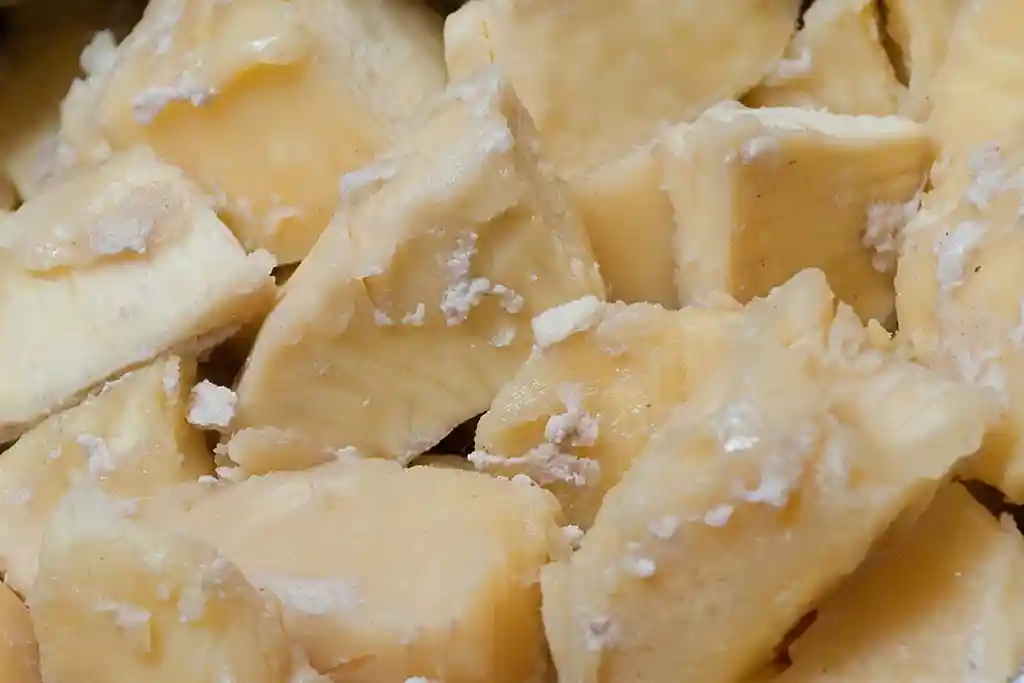Gollai Åppan: Starchy Vegetables in Reduced Coconut Cream

Table of Contents
Share This
Description
A method of boiling starchy foods such as tubers, plantains or breadfruit, in the cream produced by squeezing grated fresh, ripe coconut with water to make “lechen niyok”, or coconut cream.
History
Origin
The use of “lechen niyok” is an indigenous cooking method in Southeast Asia and tropical Pacific islands where coconut is available. Cooking with coconut milk is also found in the Caribbean islands. This combination of starchy staple food with the fat and flavor added by the coconut cream makes this cooking method a favorite comfort food in the Marianas. “Gollai” means vegetable; “åppan” means “to dry up; to evaporate,” in this case by reducing or cooking down the liquid. “Gollai Åppan” can be used as a verb such as “ma gollai åppan” as in the cooking activity; as well as a noun to describe the dish. “Gellai” is another version used according to the context of the sentence.
Evolution
Gollai åppan has persisted as a basic cooking method probably as early as the first migrations from Southeast Asia. Tubers such as taro (suni) and yams (dågu, gaddo’, and nika), the breadfruit tree fruit (lemmai), tapioca root (mendeoka) and various plantains (chotda) were brought to the Marianas with the first migrations. Other introduced varieties and the sweet potato (kamuti) were added as they became available. The Spanish introduced the kamuti from Mexico, but the kamuti used in contemporary cooking is grown in the neighboring Mariana island of Rota (Luta), and was introduced by Japanese.
Each starch dish is named for the main ingredient, with “gollai åppan” as the prefix, such as “gollai åppan suni, gollai åppan dågu, gollai åppan lemmai, gollai åppan chotda”, and so on. Cooking with root vegetables, tubers and plantains was done as a form of survival in times of food shortages or lack of protein. Cooking them with coconut milk provided a nutritious filling meal. Oral histories taken from World War II survivors often contain a reference to this dish, and sometimes included the cooking of rice in “lechen niyok” for sustenance and flavor. Gollai åppan has become a popular fiesta food because of its delicious flavor.
Preparation
This method varies by region and family, but in all cases the starchy vegetable is peeled and cut into serving-sized pieces. The pieces are placed in a pot large enough to accommodate all, with at space left on top for the boiling coconut cream to bubble over the vegetable. A mixture of coconut cream with salt to taste and sometimes a little sugar is poured over the vegetables, enough liquid to be visible but not fully covering the pieces. This is brought to a boil, so that the coconut mixture bubbles up over the vegetable. As soon as the boiling point is reached, the pot is covered and the heat turned very low. This allows the cooking to continue by steaming, while the coconut cream evaporates or cooks down without burning. When the mixture is “åppan”, and the vegetable still firm but soft and coated with the coconut cream (about 20 minutes), the dish is ready to serve.
Placement on table
“Gollai Åppan” dishes are placed towards the head of the table, after the red rice, and along with other starches (called “åggon”) such as dinner rolls and titiyas. The “åggon” is followed by the “totche” dishes, which refer to the protein and other dishes that accompany the starches. As a special note, however, if the gollai åppan chotda (unripe banana), which is also referred to as “gollai åppan aga” (banana), is made with ripe bananas it should be placed in the dessert section.
Recipe
Gollai Åppan Lemmai: Breadfruit in Coconut Cream
- 1 large (3-5 lb) breadfruit
- 2 coconuts (milk extracted or a 12 ounce can of coconut milk may be substituted)
- ½ teaspoon salt
- 2-3 tablespoons sugar (optional)
- Water
As in many traditional recipes, proportions are not exact and depend on the experience and tastes of the cook. Usually cooked in large quantities, the following proportions may be adjusted accordingly: 1 large (3-5 lb) breadfruit can be cooked with the “lechen niyok” made from two coconuts with 8-10 ounces of water added. A 12 ounce can of commercially-prepared coconut milk may be substituted. ½ teaspoon salt is added. 2-3 tablespoons of sugar may be added, especially if the breadfruit is not yet sweet. Mix thoroughly and pour over the breadfruit pieces. Any of the other starches named above may be substituted.
* Recipe by Judy Flores, PhD
Video
Gollai åppan aga’: Bananas in coconut milk demonstration
Watch more Fiesta Table video demonstrations here.
